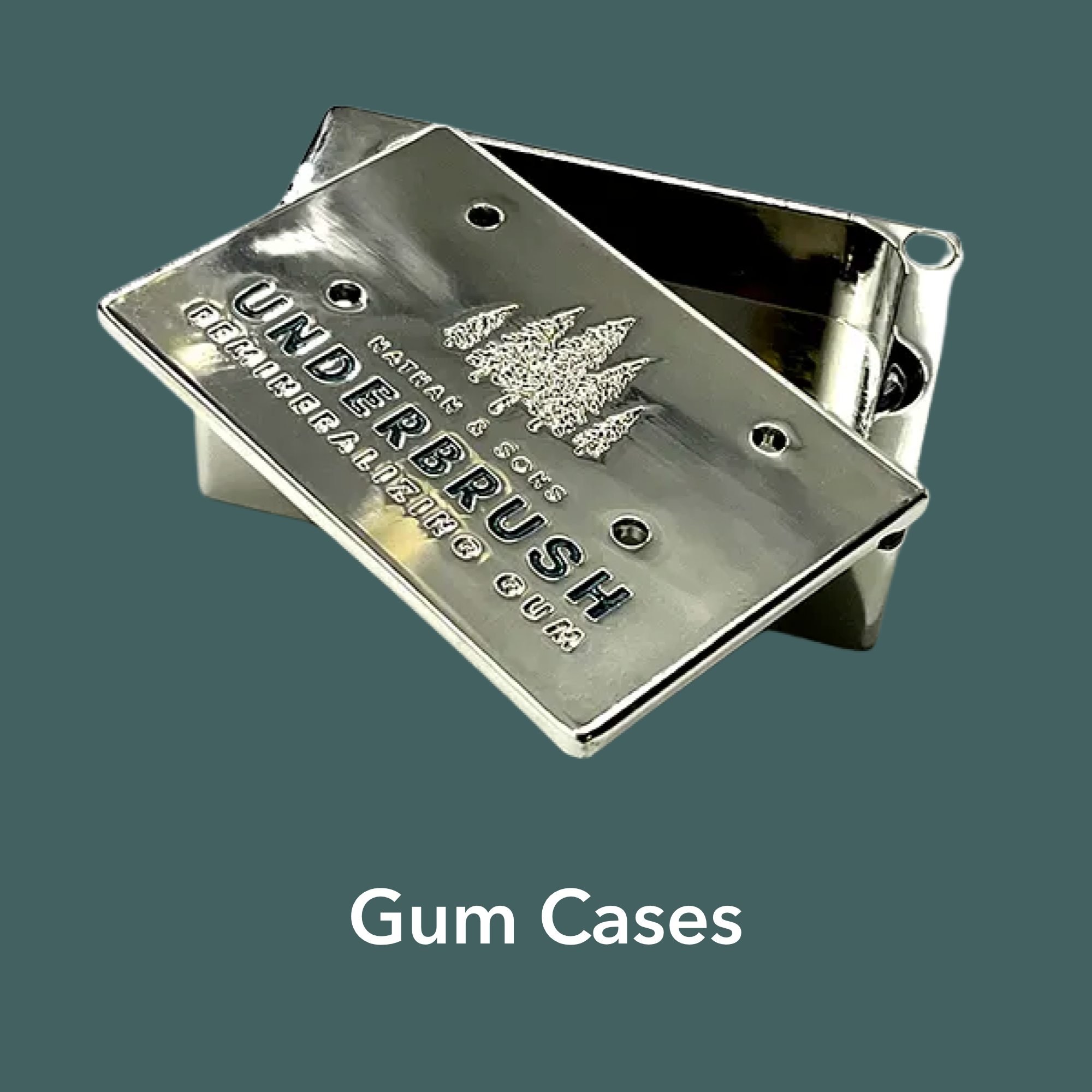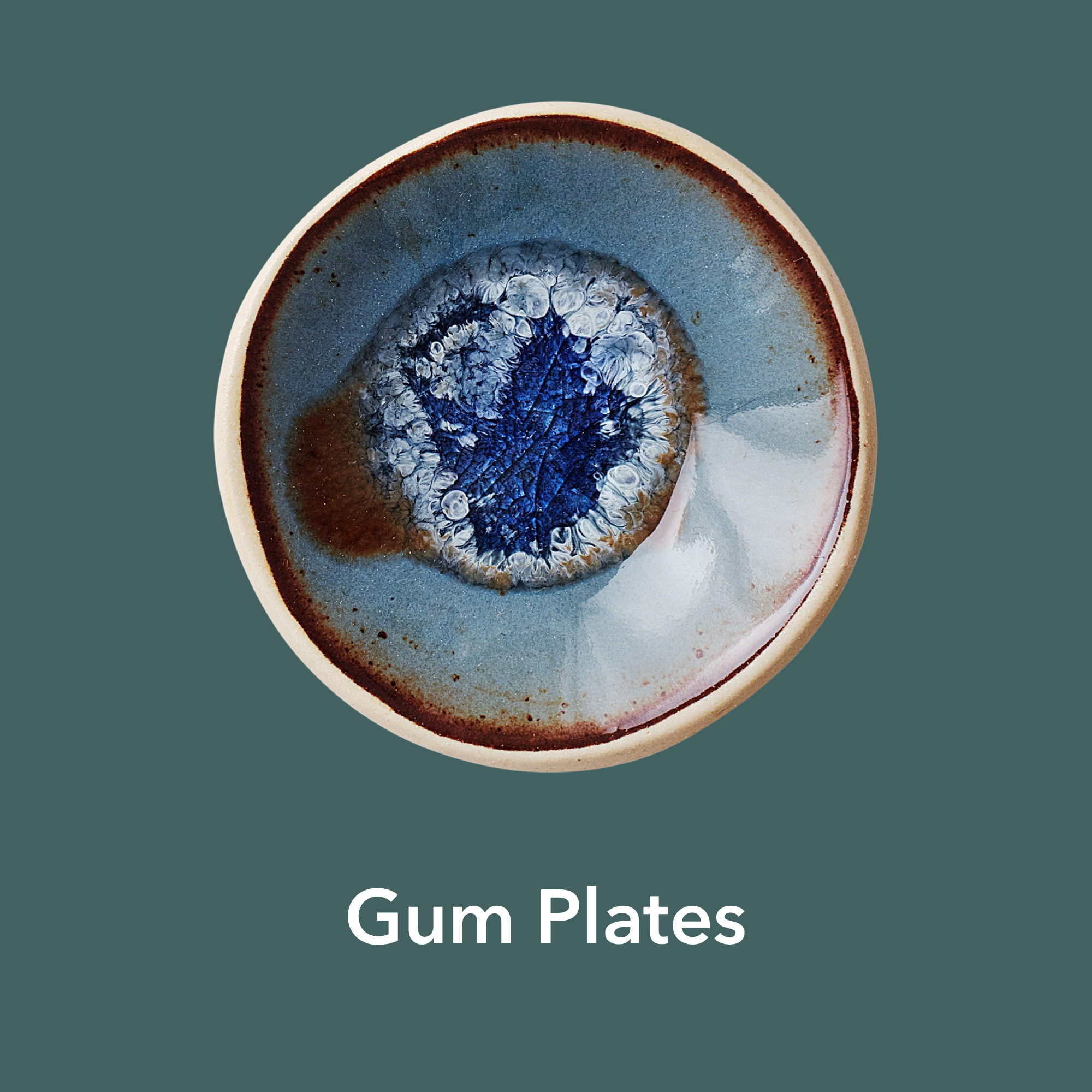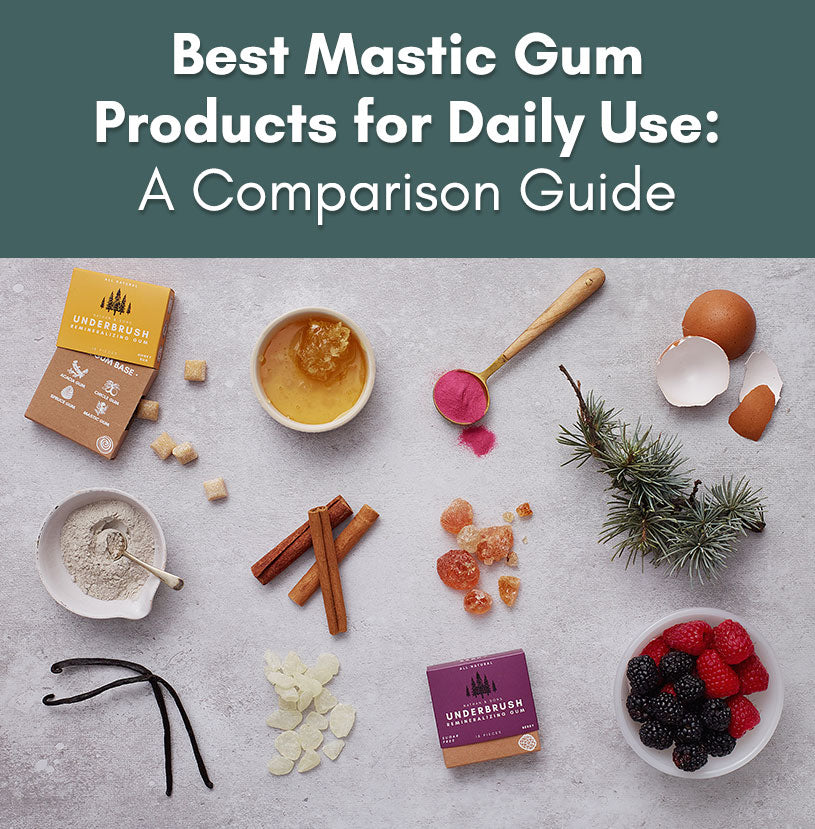If you’ve ever experienced that sharp, shooting pain when sipping hot coffee or enjoying ice cream, you’re not alone. Tooth sensitivity affects millions of people worldwide, with recent studies showing that approximately 12.3% of adults experience dentin hypersensitivity, with those affected having an average of 3.5 sensitive teeth [1]. Even more concerning, a comprehensive European study revealed that nearly 1 in 2 adults now suffer from tooth sensitivity, indicating this condition is far more widespread than previously understood [2].
The traditional approach to managing tooth sensitivity often involves harsh chemical treatments, desensitizing toothpastes with artificial ingredients, or expensive dental procedures. However, emerging research in natural oral care is revealing gentler, more effective solutions that work with your body’s natural healing processes rather than against them. Among these breakthrough approaches, remineralizing chewing gum represents a revolutionary method for addressing tooth sensitivity at its root cause while providing convenient, daily relief.
This comprehensive guide explores the science behind tooth sensitivity, examines why conventional treatments often fall short, and reveals how natural remineralizing gum containing nano-hydroxyapatite and other therapeutic ingredients can provide lasting relief without the side effects associated with synthetic alternatives. We’ll delve into the latest research, share real-world applications, and provide practical guidance for incorporating these natural solutions into your daily oral care routine.
Understanding Tooth Sensitivity: The Root of the Problem
Tooth sensitivity, clinically known as dentin hypersensitivity, occurs when the underlying layer of your teeth called dentin becomes exposed [3]. Unlike the hard outer enamel that protects your teeth, dentin contains thousands of tiny tubules that connect directly to the nerve center of your tooth. When these tubules are exposed due to enamel erosion, gum recession, or other factors, external stimuli like hot, cold, sweet, or acidic substances can trigger pain signals directly to the tooth’s nerve.
The primary causes of tooth sensitivity include aggressive brushing with hard-bristled toothbrushes, consumption of acidic foods and beverages, teeth grinding (bruxism), gum disease leading to recession, and the natural aging process that gradually wears down enamel [4]. Modern dietary habits, particularly the increased consumption of acidic beverages like sodas, sports drinks, and citrus juices, have significantly contributed to the rising prevalence of enamel erosion and subsequent sensitivity.
Research published in the Journal of the American Dental Association identifies several key factors that contribute to dentin exposure: tooth decay, cracked or fractured teeth, worn tooth enamel, worn fillings, and exposed tooth roots resulting from aggressive brushing or gum recession [5]. Understanding these underlying causes is crucial because effective treatment must address not just the symptoms but the fundamental processes that lead to sensitivity in the first place.
The conventional medical approach typically focuses on blocking pain signals through potassium nitrate or strontium chloride, ingredients commonly found in commercial desensitizing toothpastes. While these may provide temporary relief, they don’t address the underlying structural damage to the tooth or support the natural remineralization process that could provide lasting protection
The Limitations of Conventional Tooth Sensitivity Treatments
Most commercial sensitivity treatments rely on a symptom-management approach rather than addressing the root cause of the problem. Desensitizing toothpastes containing potassium nitrate work by temporarily blocking nerve signals, but they require continuous use and often contain artificial ingredients, preservatives, and synthetic chemicals that some people prefer to avoid [6].
Professional treatments like fluoride varnishes or in-office desensitizing procedures can be expensive and may require multiple visits. Additionally, some individuals experience sensitivity to fluoride itself or prefer to avoid it due to concerns about long-term exposure. These treatments also don’t actively rebuild the damaged tooth structure that caused the sensitivity in the first place.
The temporary nature of conventional treatments means that sensitivity often returns when treatment is discontinued. This creates a cycle of dependence on synthetic products without addressing the fundamental issue: the need to restore and strengthen the tooth’s natural protective barriers through remineralization.
The Science of Natural Remineralization For Tooth Sensitivity
Natural remineralization represents a paradigm shift in oral care, focusing on supporting and enhancing the body’s innate ability to repair and strengthen teeth. This process involves the deposition of essential minerals like calcium, phosphate, and hydroxide ions back into the tooth structure, effectively reversing early stages of decay and strengthening areas of weakness that contribute to sensitivity [7].
Recent advances in dental research have identified nano-hydroxyapatite as a breakthrough ingredient that can effectively remineralize tooth enamel and dentin. Hydroxyapatite is the primary mineral component of teeth and bones, comprising approximately 97% of tooth enamel and 70% of dentin [8]. When formulated at the nanoscale, hydroxyapatite particles can penetrate into the microscopic defects in tooth enamel and dentin, filling in gaps and strengthening the overall structure.
A comprehensive review published in the International Journal of Environmental Research and Public Health analyzed multiple studies on nano-hydroxyapatite and concluded that it demonstrates significant remineralization potential, with the ability to create new apatite crystals within damaged tooth structures [9]. This research represents a fundamental shift from merely managing symptoms to actually repairing the underlying damage that causes sensitivity.
The remineralization process is enhanced when nano-hydroxyapatite is combined with other natural minerals and compounds that support oral health. Calcium bentonite clay, for example, provides additional calcium, iron, copper, and zinc while offering gentle abrasive properties that help remove plaque and surface stains [10]. Organic compounds like xylitol and erythritol not only provide natural sweetness but also create an alkaline environment in the mouth that supports remineralization while inhibiting harmful bacterial growth.
How Remineralizing Gum Works: A Multi-Modal Approach
Remineralizing chewing gum represents an innovative delivery system that combines the mechanical benefits of chewing with the therapeutic effects of remineralizing ingredients. The act of chewing stimulates saliva production, which is crucial for maintaining oral health and supporting natural remineralization processes [11]. Saliva contains natural minerals and proteins that help neutralize acids, wash away food particles, and provide the building blocks for tooth repair.
When you chew remineralizing gum, several beneficial processes occur simultaneously. The mechanical action helps remove food particles and plaque from tooth surfaces, while the extended contact time allows therapeutic ingredients to interact directly with tooth enamel and exposed dentin. Unlike toothpaste, which is quickly rinsed away, chewing gum provides prolonged exposure to remineralizing agents, maximizing their therapeutic potential.
The nano-hydroxyapatite in remineralizing gum works by adhering to tooth surfaces and gradually releasing calcium and phosphate ions. These ions are then incorporated into the tooth structure through a process called biomimetic remineralization, which closely mimics the body’s natural tooth formation process [12]. This approach is particularly effective for addressing sensitivity because it specifically targets the areas where dentin tubules are exposed, gradually filling them in and reducing pain transmission.
Natural gum bases derived from chicle, mastic, and spruce provide additional therapeutic benefits beyond simple delivery of active ingredients. Mastic gum, derived from the Pistacia lentiscus tree, has been used for centuries in traditional medicine and possesses documented antibacterial and anti-inflammatory properties [13]. These properties help address the bacterial imbalances that often contribute to gum recession and enamel erosion, tackling sensitivity from multiple angles.
Key Natural Ingredients for Tooth Sensitivity Relief
The most effective natural solutions for tooth sensitivity combine multiple therapeutic ingredients that work synergistically to address different aspects of the problem. Understanding these ingredients and their mechanisms of action can help you make informed decisions about natural oral care products.
Nano-Hydroxyapatite stands as the cornerstone ingredient in advanced remineralizing formulations. Research published in the Journal of Clinical Medicine demonstrates that nano-hydroxyapatite can effectively remineralize early carious lesions and strengthen tooth enamel [14]. Its biocompatibility and similarity to natural tooth mineral make it an ideal ingredient for long-term use without adverse effects.
Calcium Bentonite Clay provides a rich source of bioavailable minerals including calcium, magnesium, potassium, and trace elements essential for tooth health. Studies have shown that bentonite clay possesses natural antibacterial properties and can help remove toxins and harmful bacteria from the oral cavity [15]. Its gentle abrasive action also helps remove surface stains and plaque without damaging enamel.
Organic Xylitol and Erythritol serve dual purposes as natural sweeteners and therapeutic agents. Research consistently shows that xylitol can reduce harmful bacteria in the mouth, particularly Streptococcus mutans, which is primarily responsible for tooth decay [16]. Erythritol has been shown to have similar antibacterial properties while also supporting an alkaline oral environment that favors remineralization.
Mastic Gum brings centuries of traditional use backed by modern scientific validation. Studies have demonstrated its effectiveness against oral pathogens and its ability to reduce inflammation in the gums [17]. For individuals with sensitivity caused by gum recession or inflammation, mastic gum provides targeted therapeutic benefits.
Myrrh Gum offers potent antimicrobial and anti-inflammatory properties that have been recognized since ancient times. Modern research confirms its effectiveness against oral bacteria and its ability to support gum health [18]. Its inclusion in remineralizing formulations helps address the bacterial component of tooth sensitivity while supporting overall oral health.
Organic Eggshell Powder provides a natural source of calcium carbonate along with trace minerals like magnesium, phosphorus, and strontium. Research has shown that eggshell-derived calcium is highly bioavailable and can effectively support remineralization processes [19]. This sustainable ingredient offers an eco-friendly alternative to synthetic calcium sources.
Clinical Evidence and Research Support For Natural Remineralization Therapy
The scientific foundation for natural remineralization therapy continues to grow, with numerous peer-reviewed studies demonstrating the effectiveness of these approaches. A systematic review published in Applied Sciences analyzed multiple studies on enamel remineralization and concluded that natural approaches, particularly those involving nano-hydroxyapatite, show significant promise for reversing early enamel damage and reducing sensitivity [20].
One particularly compelling study published in Frontiers in Public Health examined the caries-preventing effects of hydroxyapatite toothpaste in children and found significant improvements in enamel health compared to conventional fluoride treatments [21]. While this study focused on toothpaste rather than gum, it demonstrates the broader potential of hydroxyapatite-based therapies for oral health.
Research specifically examining chewing gum as a delivery method for oral health ingredients has shown promising results. A study published in the International Journal of Dentistry found that chewing gum containing remineralizing agents could effectively deliver therapeutic compounds to all areas of the mouth, including hard-to-reach posterior teeth [22]. The extended contact time provided by chewing gum allows for better penetration of active ingredients into tooth structures.
The safety profile of natural remineralizing ingredients has been extensively studied, with research consistently showing minimal to no adverse effects. A comprehensive safety assessment of nano-hydroxyapatite published in Regulatory Toxicology and Pharmacology concluded that it poses no significant health risks and can be safely used in oral care products [23]. This safety profile makes natural remineralizing gum an attractive option for individuals seeking long-term sensitivity management without concerns about synthetic chemical exposure.
Practical Implementation: Using Remineralizing Gum Effectively
To maximize the benefits of remineralizing gum for sensitivity relief, proper usage techniques and timing are essential. The optimal approach involves chewing 1-2 pieces of remineralizing gum for at least 30 minutes after meals, when acid levels in the mouth are typically highest and teeth are most vulnerable to demineralization [24].
The extended chewing time is crucial because it takes time for the therapeutic ingredients to penetrate into tooth structures and begin the remineralization process. Unlike conventional gum that loses its flavor quickly, high-quality remineralizing gum maintains its therapeutic properties throughout the recommended chewing period.
Timing your gum use strategically can enhance its effectiveness. Chewing remineralizing gum after consuming acidic foods or beverages helps neutralize acid levels and provides immediate protection against enamel erosion. This is particularly important for individuals who regularly consume coffee, wine, citrus fruits, or other acidic substances that can contribute to sensitivity.
For individuals with severe sensitivity, a gradual introduction approach may be beneficial. Starting with shorter chewing periods and gradually increasing to the full 30-minute recommendation allows your teeth and gums to adapt to the therapeutic ingredients. Some people may experience initial mild sensitivity as the remineralization process begins, but this typically subsides within a few days of consistent use.
Consistency is key to achieving lasting results with natural remineralization therapy. Unlike quick-fix approaches that provide temporary relief, natural remineralization works gradually to rebuild and strengthen tooth structures. Most users report noticeable improvements in sensitivity within 2-3 weeks of consistent use, with continued improvements over several months.
Complementary Natural Approaches
While remineralizing gum can be highly effective on its own, combining it with other natural oral care practices can enhance results and provide comprehensive sensitivity management. A holistic approach to oral health addresses multiple factors that contribute to sensitivity and supports overall dental wellness.
Dietary Modifications play a crucial role in managing tooth sensitivity naturally. Reducing consumption of acidic foods and beverages, particularly sodas, sports drinks, and citrus juices, can significantly slow enamel erosion and reduce sensitivity triggers. When acidic foods are consumed, waiting at least 30-60 minutes before brushing allows saliva to neutralize acids and prevents mechanical damage to softened enamel.
Oil Pulling with coconut oil has gained recognition as an effective complementary practice for oral health. Research published in the Journal of Traditional and Complementary Medicine demonstrates that oil pulling can reduce harmful bacteria in the mouth and support gum health [25]. The antimicrobial properties of coconut oil, combined with the mechanical action of swishing, help remove toxins and bacteria that can contribute to sensitivity.
Proper Brushing Technique using a soft-bristled toothbrush and gentle circular motions helps prevent further enamel wear and gum recession. Many cases of sensitivity are exacerbated by aggressive brushing that gradually wears away protective enamel and causes gum recession. Switching to a natural toothpaste free from harsh abrasives and synthetic detergents can also support the remineralization process.
Stress Management addresses the often-overlooked connection between stress and oral health. Chronic stress can lead to teeth grinding (bruxism), which accelerates enamel wear and increases sensitivity. Additionally, stress affects immune function and can impair the body’s natural healing processes, including remineralization.
Addressing Common Concerns and Questions
Many individuals considering natural approaches to tooth sensitivity relief have legitimate questions about effectiveness, safety, and expectations. Addressing these concerns helps ensure realistic expectations and optimal outcomes.
“How long does it take to see results?” is perhaps the most common question about natural remineralization therapy. While some individuals notice reduced sensitivity within days of starting remineralizing gum, most people experience gradual improvement over 2-4 weeks of consistent use. The timeline depends on factors including the severity of sensitivity, underlying causes, and individual healing capacity.
“Is natural remineralization as effective as conventional treatments?” Research suggests that natural approaches can be equally or more effective than conventional treatments, particularly for long-term management. While conventional desensitizing agents may provide faster initial relief, natural remineralization offers the advantage of actually repairing damaged tooth structures rather than simply masking symptoms.
“Are there any side effects?” Natural remineralizing ingredients have excellent safety profiles with minimal risk of adverse effects. Some individuals may experience mild initial sensitivity as the remineralization process begins, but this typically resolves quickly. Unlike some conventional treatments, natural approaches don’t carry risks of fluoride toxicity or allergic reactions to synthetic chemicals.
“Can children use remineralizing gum?” Most natural remineralizing gums are safe for children, but it’s important to ensure they can chew gum safely without swallowing it. The natural ingredients in high-quality remineralizing gum are generally safer for children than synthetic alternatives, but parental supervision is recommended for younger children.
The Future of Natural Oral Care
The growing body of research supporting natural remineralization therapy represents just the beginning of a broader shift toward biomimetic approaches in oral care. Scientists are continuing to develop new formulations and delivery methods that enhance the effectiveness of natural ingredients while maintaining their safety profiles.
Emerging research is exploring the potential of combining nano-hydroxyapatite with other bioactive compounds like peptides and growth factors that could further enhance remineralization. These developments may lead to even more effective natural solutions for sensitivity and other oral health challenges.
The increasing consumer demand for natural, sustainable oral care products is driving innovation in ingredient sourcing and formulation. Companies are investing in research to identify new natural compounds with therapeutic properties while developing more sustainable production methods for existing ingredients.
As our understanding of the oral microbiome continues to evolve, future natural oral care products may be designed to support beneficial bacteria while targeting harmful species more precisely. This personalized approach to oral health could revolutionize how we prevent and treat sensitivity and other dental conditions.
Conclusion: Embracing Natural Solutions for Tooth Sensitivity Lasting Relief
Tooth sensitivity doesn’t have to be a permanent condition that limits your enjoyment of food and beverages. Natural remineralization therapy, particularly through the use of scientifically formulated remineralizing gum, offers a safe, effective, and sustainable approach to addressing sensitivity at its root cause.
The combination of nano-hydroxyapatite, natural minerals, and therapeutic plant compounds provides a comprehensive solution that not only relieves sensitivity but actually strengthens and repairs tooth structures. This approach aligns with the body’s natural healing processes while avoiding the potential side effects and limitations of synthetic alternatives.
By incorporating remineralizing gum into your daily oral care routine and adopting complementary natural practices, you can achieve lasting relief from tooth sensitivity while supporting overall oral health. The growing body of scientific evidence supporting these approaches provides confidence that natural solutions can be both effective and safe for long-term use.
As we continue to learn more about the intricate relationships between oral health, overall wellness, and natural healing processes, the role of natural remineralization therapy will likely expand. For individuals seeking alternatives to conventional sensitivity treatments, remineralizing gum represents a promising option that addresses both immediate symptoms and long-term oral health goals.
The journey toward natural oral health is not just about treating existing problems but preventing future issues through daily practices that support your body’s innate healing capacity. With consistent use and proper technique, natural remineralizing gum can be a powerful tool in achieving and maintaining optimal oral health while providing the sensitivity relief you need to enjoy life’s simple pleasures once again.
Take the next step in your oral health journey—order Nathan and Sons Remineralizing Gum today and experience natural relief from tooth sensitivity while strengthening your smile from the inside out.
—
References
[1] Cunha-Cruz, J., et al. (2013). The prevalence of dentin hypersensitivity in general dental practices in the northwest United States. *Journal of the American Dental Association*, 144(3), 288-296. https://pmc.ncbi.nlm.nih.gov/articles/PMC3819160/
[2] Haleon. (2023). New study reveals now 1 in 2 adults are suffering the pain of tooth sensitivity. *Press Release*. https://www.haleon.com/news/press-releases/brand/2023/new-study-reveals-now-1-in-2-adults-are-sufferung-the-pain-of-tooth-sensitivity
[3] University of Utah Health. (2023). The Perils of Sensitive Teeth. *Health Feed*. https://healthcare.utah.edu/healthfeed/2023/12/perils-of-sensitive-teeth
[4] Colgate. (2024). What Causes Sensitive Teeth? *Oral Health Guide*. https://www.colgate.com/en-us/oral-health/tooth-sensitivity/what-causes-sensitive-teeth
[5] American Dental Association. (2003). Sensitive teeth. *Journal of the American Dental Association*, 134(3), 279. https://jada.ada.org/article/S0002-8177(14)65480-5/fulltext
[6] Hopkins Medicine. (2024). Sensitive Teeth: Why They Hurt and How to Stop the Pain. *Health Library*. https://www.hopkinsmedicine.org/health/conditions-and-diseases/sensitive-teeth
[7] Malcangi, G., et al. (2023). Analysis of Dental Enamel Remineralization: A Systematic Review of Technique and Efficacy. *Applied Sciences*, 13(8), 4912. https://pmc.ncbi.nlm.nih.gov/articles/PMC10135549/
[8] Arifa, M.K., et al. (2019). Recent Advances in Dental Hard Tissue Remineralization: A Review of Literature. *International Journal of Clinical Pediatric Dentistry*, 12(2), 139-144. https://pmc.ncbi.nlm.nih.gov/articles/PMC6749882/
[9] Anil, A., et al. (2022). Nano-Hydroxyapatite (nHAp) in the Remineralization of Early Dental Caries: A Scoping Review. *International Journal of Environmental Research and Public Health*, 19(9), 5629. https://www.mdpi.com/1660-4601/19/9/5629
[10] Pushpalatha, C., et al. (2023). Nanohydroxyapatite in dentistry: A comprehensive review. *Journal of International Society of Preventive & Community Dentistry*, 13(5), 381-390. https://pmc.ncbi.nlm.nih.gov/articles/PMC10562112/
[11] American Dental Association. (2023). Chewing Gum. *Oral Health Topics*. https://www.ada.org/resources/ada-library/oral-health-topics/chewing-gum
[12] Pepla, E., et al. (2014). Nano-hydroxyapatite and its applications in preventive, restorative and regenerative dentistry: a review of literature. *Annali di Stomatologia*, 5(3), 108-114. https://pmc.ncbi.nlm.nih.gov/articles/PMC4252862/
[13] Georganics. (2024). The Multifaceted Benefits of Natural Chewing Gum. *Blog Post*. https://georganics.com/blogs/posts/the-multifaceted-benefits-of-natural-chewing-gu
[14] Pawinska, M., et al. (2024). Hydroxyapatite as an active ingredient in oral care. *Heliyon*, 10(3), e25633. https://www.sciencedirect.com/org/science/article/pii/S2045986624000033
[15] Today’s RDH. (2025). Tooth Remineralization Agents: An Evidence-Based Review to Make Informed Patient Recommendations. *Clinical Article*. https://www.todaysrdh.com/tooth-remineralization-agents-an-evidence-based-review-to-make-informed-patient-recommendations/
[16] Perfora Care. (2024). Chewing Gum Ingredients Good For Teeth: A Guide to a Healthy Chew. *Educational Content*. https://perforacare.com/blogs/chewing-gum/chewing-gum-ingredients-good-for-teeth-a-guide-to-a-healthy-chew
[17] Healthline. (2024). Chewing Gum: Good or Bad? *Nutrition Guide*. https://www.healthline.com/nutrition/chewing-gum-good-or-bad
[18] WebMD. (2024). What to Know About Chewing Gum. *Health Information*. https://www.webmd.com/diet/what-to-know-about-chewing-gum
[19] Eisenhuth, G. (2023). Potential Application of Nano-Hydroxyapatite in Tooth Remineralization. *Roseman University Research Symposium*. https://ecommons.roseman.edu/cgi/viewcontent.cgi?article=1259&context=researchsymposium
[20] Reguzzoni, M., et al. (2024). Assessment of the Effects of Enamel Remineralization After Treatment with Three Different Agents and Evaluation with Scanning Electron Microscopy: An In Vitro Study. *Applied Sciences*, 15(1), 3. https://www.mdpi.com/2076-3417/15/1/3
[21] Paszynska, E., et al. (2023). Caries-preventing effect of a hydroxyapatite-toothpaste in children: a 12-month randomized, controlled clinical trial. *Frontiers in Public Health*, 11, 1199728. https://www.frontiersin.org/journals/public-health/articles/10.3389/fpubh.2023.1199728/full
[22] Thivya, P., et al. (2021). Biodegradable medicated chewing gum: A modernized herbal formulation and its therapeutic applications. *Future Journal of Pharmaceutical Sciences*, 7(1), 150. https://www.sciencedirect.com/science/article/pii/S2666833521000447
[23] Ask the Dentist. (2022). Current Research on Hydroxyapatite Toothpaste Efficacy and Safety. *Clinical Review*. https://askthedentist.com/hydroxyapatite-studies/
[24] Colgate. (2024). 5 Benefits Of Chewing Gum. *Oral Health Guide*. https://www.colgate.com/en-us/oral-health/selecting-dental-products/5-benefits-of-chewing-gum
[25] Dr. Axe. (2025). Is Chewing Gum Bad for You? Pros, Cons & More. *Health Article*. https://draxe.com/nutrition/chewing-gum-bad/













